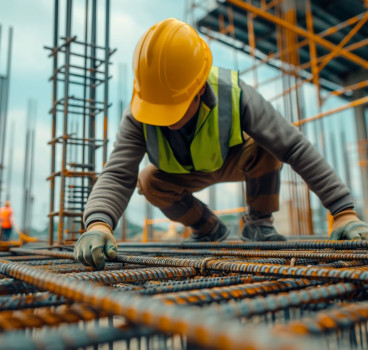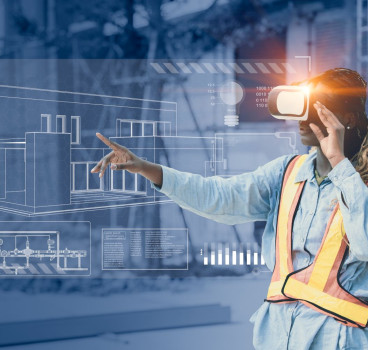How flood barriers are holding back the tide
Floods, persistent natural disasters, have plagued humanity for centuries. From the overflowing Nile River in ancient Egypt to the devastating 2021 floods in Europe, their destructive power is undeniable. As climate change intensifies the frequency of extreme weather events, the need for effective flood protection solutions grows even more urgent, writes John Ridgeway.
Flood barriers are now being increasingly used as a critical last line of defence against rising waters. They come in various forms, each suited to specific needs and environments, but they all do the same job, with various degrees of efficiency.
It could explain why the global flood barrier market is experiencing such significant growth. It was valued at $1.61 billion in 2023 and is expected to reach $2.39 billion by 2028, with a Compound Annual Growth Rate (CAGR) of 8.3%.
Increasing flood risks due to climate change, urbanisation trends in flood-prone areas and growing government investments in flood management infrastructure, are driving this growth – and it is easy to see why demand is on the up.
Floods pose an ever increasing and significant threat across the globe, with devastating consequences. Rising global temperatures have led to more erratic weather patterns, including increased rainfall and more frequent floods.
As cities expand on to traditional flood plains and coastal areas, these risks become more pronounced, exacerbated by melting glaciers and thermal expansion of oceans, which further contribute to rising sea levels, making coastal communities more susceptible to flooding.
The technology behind flood barriers
While the basic concept of a flood barrier seems straightforward, significant engineering goes into their design and construction. They understandably require robust materials that can withstand immense water pressure and resist corrosion, such as concrete, steel, aluminium, and heavy-duty fabrics.

Flood barriers also need to be structurally sound to resist water forces. Calculations need to consider factors like water depth, wave pressure, and soil conditions. This is in response to advanced computer simulations that are being used to help predict flood behaviour and optimise the design of barriers for maximum effectiveness.
And in this age of technology, some advanced flood barriers are now incorporating sensors that monitor water levels and send real-time data to authorities, enabling proactive flood management.
Where flood barriers will be most needed
Flood risk is not evenly distributed across the globe. Locations like Southeast Asia, low-lying island nations and coastal regions in Europe and North America are more prone to rising sea levels and storm surges, necessitating robust seawalls and floodgates.
Areas along major rivers, particularly in Asia (Yangtze, Ganges, Mekong) and Africa (Nile, Niger), are prone to frequent riverine flooding, requiring protective levees and deployable barriers.
As cities continue to expand into floodplains and coastal areas, flood protection infrastructure like temporary deployable barriers has become even more essential to safeguard infrastructure and populations.
This means that the future of flood barriers is brimming with potential for innovation and collaboration. We are seeing the development of lightweight, high-strength and environmentally friendly materials. As already mentioned, there is now the integration of sensors for real-time monitoring, automated deployment mechanisms and self-repairing capabilities, being built in to new barriers.
Collaborative efforts between governments, communities, and private companies are also leading to innovative, localised flood protection strategies. Furthermore, increased awareness of flood risks and preparedness measures are empowering communities to respond effectively during floods.
Despite these promising advancements, several challenges still need to be addressed. For large-scale infrastructure projects like levees and seawalls, affordability remains a significant concern.
Ensuring consistent design, construction and maintenance standards across regions is also crucial for the effectiveness of flood barriers. In addition, the potential disruption of natural ecosystems by flood barriers needs careful consideration and mitigation strategies to ensure that flood protection measures reach vulnerable communities.
Without doubt, floods remain a formidable threat, but they don't have to be an inevitable disaster. By implementing a combination of flood barriers, sustainable design practices and proactive flood management strategies, we can build a more resilient future.
This requires a collaborative effort, where governments, businesses, communities and individuals work together to mitigate flood risks and ensure the safety of people and property. With continuous innovation and a commitment to sustainability, flood barriers can evolve into powerful tools for safeguarding our communities to secure a future less susceptible to the ravages of floods.
Additional Blogs

What the UK can learn from global construction tech leaders
The UK construction sector stands at a critical crossroads. Mounting pressures - stagnant productivity, acute labour shortages, tightening safety requirements, ambitious carbon-reduction targets and...
Read moreAre architects losing their influence in the digital era?
For decades, architects have been the central creative force in construction, shaping the buildings we see and the way projects are conceived, communicated and delivered. Their role has been...
Read more

Why the word “Innovation” has lost its meaning in construction
“Innovation” has become one of the most overused terms in construction. It appears in the dozens of press releases we receive each day, conference talks and project reports, often without any real...
Read more